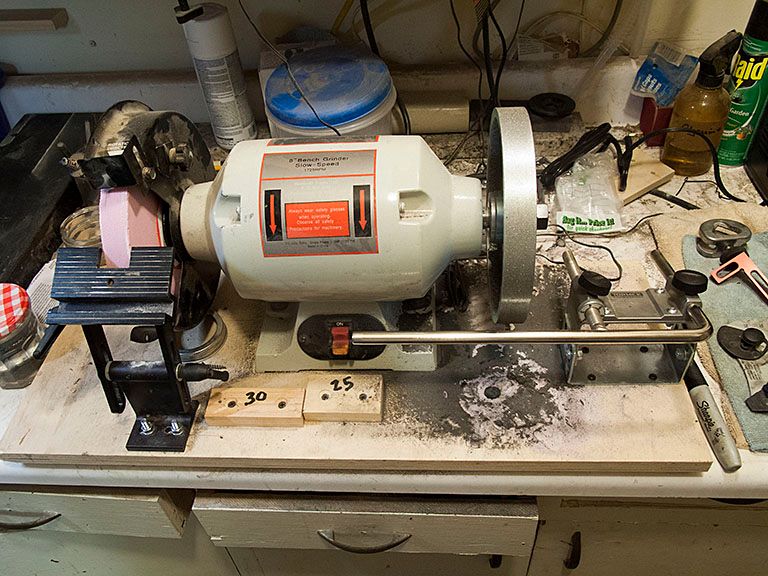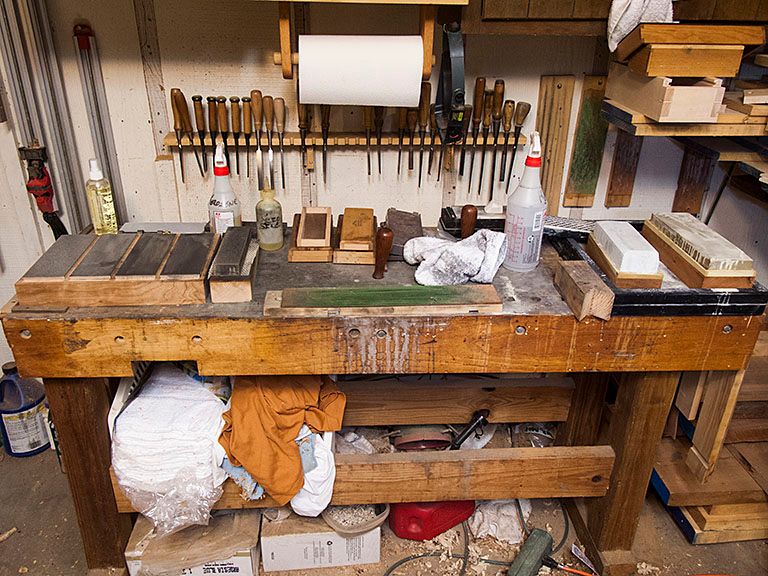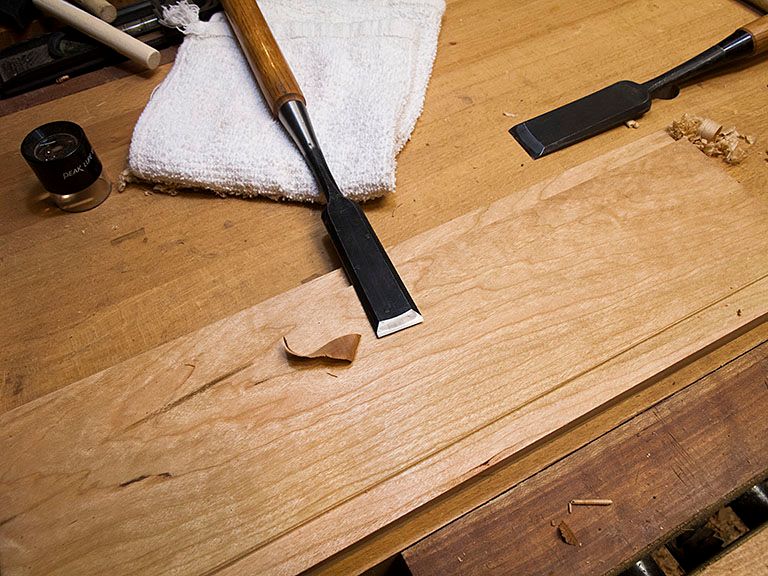Most of the Western iron has been hollow ground on the CBN wheel. then the grind marks taken out on 600 and 1200 Atoma plates followed by setting up the Hard Black Ark with a Washita and polishing on a Horse's Butt strop with "green stuff". Other than the grinding it is very fast and gives a sharp, strong edge. If the iron is in good shape with a bevel that is not too steep, I will skip the CBN wheel and the 600 Atoma.
The grinding station with the CBN wheel:
There is a learning curve with the CBN wheel if you want a straight, square edge. The wheel is very aggressive and it is easy to make uneven and un-square grinds when using it, even when using the Tormek jig.
For the Japanese iron, both setting the bevel and honing/polishing is freehand. Depending on the condition of the iron I will set a flat bevel starting with either the 400 or 600 Atoma and on through the 1200. The honing setup stone is still the Washita followed by the medium Jnat and polished on the hard Jnat. The hard Jnat does a good job of polishing with no need to strop. To remove any wire edge that is left I will give it either a pull on an oiled strop or a pull through Oak end grain.
The bench is set up with diamond plates on the left, Atoma 120, 400, 600, and 1200. Next to the plate holder is the oil stone holder. For oil stones I have a soft Ark, a Washita, a Hard Black Ark, and a Translucent Ark available. The strop area is in the middle with a Oak block to the right. On the right end is the water stone pond with the Jnats. There are more stones stored in the cabinet above the bench, every thing from a 20000 Gukumyo to some 40 year old Kings with old diamond plates and more Shaptons of all grits thrown in.
Here is a #2 White Paper Steel push chisel sharpened on the Jnats. One of the advantages of using Jnats other than a very sharp edge is an edge that lasts longer because of smaller groves left from the stone's grit. An aesthetic advantage with natural stones the Ha (steel) and the Ji (soft iron) will be differentiated.
You may be able to see the line between the Ha and the Ji in this photo, as always click 'em to big 'em.
ken



Ken,
ReplyDeleteany tips on how to de-glaze an old Arkansas soft and hard stone?
Ralph,
ReplyDeleteJust use your coarsest diamond plate, I do it maybe monthly on my set up stones, it re-flattens the stone as well as de-glazes it and keeps the stone cutting quickly. There are some who once they get an Ark finish stone working will not de-glaze/flatten them. They are careful to keep the stones from glazing and work the stone so it doesn't need flattening. They claim, and I expect they are correct, that as the stone is used it will still cut but will become finer and a better finish stone. I'm not that anal about working the whole stone so I will occasionally de-glaze/flatten the finish stones.
ken